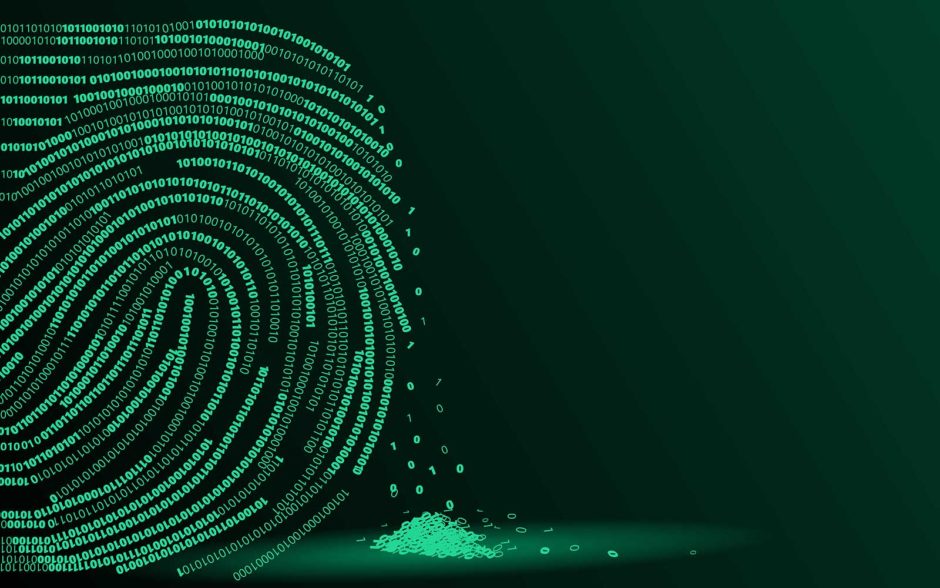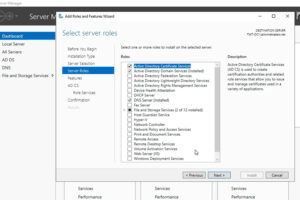Cyber Security and Digital Forensics: What’s the Difference?
Confused between these two terms? What about cyber forensics as well? No worries! In this article we’ll explore the differences and similarities between cyber forensics, digital forensics and cyber security
Some terms in the tech industry are so similar that even people working in the field for years get confused. Cyber security and digital forensics are also two of these terms that people often use interchangeably. But it is important to understand the difference between these two terms, especially if you’re a student or preparing for a job interview in this field. So, let’s explore the digital forensics vs. cyber security topic in detail.
Digital Forensics vs Cyber Security vs Cyber Forensics: A Look at These Three Terms

This industry can be confusing because there are a lot of similar yet slightly different terms that get thrown around and used interchangeably. For example, cyber forensics and cyber security are two related but separate functions. Then, sometimes, you’ll see a third term — computer forensics — which may leave you wondering what the difference is between that term and the others. With this in mind, let’s break down digital forensics vs cyber security.
Digital forensics, also known as cyber forensics, is a broad term that describes activities relating to investigating attacks and cyber incidents involving various digital assets. This includes everything from mobile phones and computers to servers, networks and so on. Basically, it’s about gathering as much digital evidence as possible regardless of device or source type. Because it’s about studying things that have occurred (and not preventing them from happening), this is why cyber forensics is considered a reactive function.
Digital forensics has three key functions:
- Retrieving data from a system for investigative purposes,
- Figuring out what’s occurred and the extent of the damages involved, and
- Finding the source of a cyberattack or incident (i.e., who’s responsible for it, how did they carry out their attack, what tools did they use, etc.).
This differs from computer forensics, which involves retrieving data from computers only.
Cyber security, on the other hand, largely focuses on protecting systems, devices, and data against cyberattacks through the use of various security controls, tools and policies. It’s about identifying possible threats then putting the necessary defenses in place to protect an organization and its assets against them accordingly. Therefore, cyber security is considered preventative in nature.
Put simply, cyber security is all about building strong defenses, whereas the goal in cyber forensics is to find the weaknesses in those defenses that allowed a cyberattack to occur. (In other words, cyber forensics is all about finding out what went wrong.)
Of course, this is just a general set of definitions. Now, let’s explore all the facets of cyber forensics vs cyber security in detail.
The Goals for Cyber Forensics and Cyber Security Are Different
The goals of digital security and cyber security professionals vary greatly. While both fight against hackers, scammers, and criminals, their approaches and tasks differ.
The goal of cyber security professionals is to make sure the security defenses are strong enough to keep hackers at bay. Some of their main objectives include:
- Making sure every piece of important data is protected with the latest encryption technology
- Preventing unauthorized access to systems
- Detecting and fixing vulnerabilities
- Preventing hacking, data breaches and data leaks
- Making sure their client/organization is compliant with relevant security- and privacy-related regulations
Cyber forensics professionals, on the other hand, have two main goals:
- Uncover the “who, what, and how” behind security incidents: A digital forensics professional’s goal is to retrace hackers’ steps to understand how they caused security incidents to occur. This involves finding loopholes in the affected organizations’ security that the hackers exploited to aid in determining the responsibilities for legal proceedings.
- Aid criminal investigations: This is more of a detective-type activity. A cyber forensic professional retrieves information from a suspect’s computer, phone, database, or other digital assets to aid the police investigation and find proof to be presented in court. Here, the crime is not necessarily related to a cyberattack or online hacking. For example, a cyber forensics expert may be asked to investigate an alleged robber’s computer and phone to discover their movements, plans, communications, and so on.
A Blurred Line Between Cyber Forensics vs Cyber Security
Cyber forensics and cyber security experts often work hand in hand when restoring data and carrying out damage control after a security incident. Companies might hire third-party cyber forensics professionals to investigate the breach/attack and assess the extent of the damage. These professionals work with the internal security team to stop the attack by finding weaknesses and fixing them. They also restore data and remove malware.
Here, the goal of both cyber security and digital forensics experts is the same — securing the systems and performing damage control.
Conflicts of Interest
If a cyber forensics professional is working for law enforcement agencies, their goal may not be to help companies mitigate attacks and restore lost data. Here, their purpose is to estimate the damage caused by the attack and determine the responsible party. They also investigate whether the victim organization has followed the proper security measures required by various regulations such as CCPA, HIPAA, and GDPR.
Digital Forensics and Cyber Security Professionals Carry Out Different Tasks
The work profile of cyber forensics and cyber security professionals varies substantially. While cyber security professionals’ roles involve tasks before and after an attack takes place, cyber forensics professionals’ work only starts afterward.
Some common tasks performed by cyber security professionals include:
- Designing, building, and maintaining secure systems and databases
- Finding and fixing bugs, misconfigurations, and vulnerabilities
- Updating all systems regularly
- Setting password and user permission policies
- Dealing with security-related paperwork
- Training other staff in security
Cyber forensics experts follow clues left by attackers to investigate how they hacked an organization’s systems. They often use the same techniques and tools that white-hat hackers (i.e., penetration testers) use to find vulnerabilities, loopholes, and bugs.
When cyber forensics professionals work for a law enforcement agency, they use checklists stipulated in the framework of the relevant regulations and examine the system against each requirement. When cyber forensic work is used for finding evidence of crime, the data must be retrieved in a manner prescribed by the laws and the method of data collection must not violate the defendant’s rights.
Digital Forensics vs Cyber Security: Each Professional Uses Different Tools
Along with manual techniques, both types of security professionals use various latest artificial intelligence/machine learning (AI/ML) based automated tools, too. Let’s start first by exploring some of the popular tools used by cybersecurity professionals:
- Web application firewall: Protects web services from cyberthreats by monitoring, filtering, and blocking malicious incoming traffic.
- SSL/TLS certificates: Facilitates an encrypted connection between a user’s browser and server to secure data while it’s in transit. The process also involves verifying the identity of the server to make sure the data reaches to the right website’s server.
- Vulnerability scanners: Detects coding bugs, security misconfigurations, and other weaknesses that exist within a system.
- Website malware detector: Searches for malware-related threats in websites.
- Penetration testing tools: These tools (Kali Linux, Metasploit, etc.) help detect weaknesses and potential penetration points in IT systems that bad guys can exploit.
- Network mapping and security tools: Tools like NMAP, Wireshark, and Aircrack-ng help you keep a close eye on your networks.
- Password security related tools: Tools like John the Ripper and KeePass are useful for pentesters who want to crack weak passwords and hashes.
Popular tools for cyber forensic professionals
- Redline: This investigative tool enables you to collect and analyze data from activity logs, registry, web history, metadata of files, and internet network activities.
- Helix3: This intuitive investigative tool is great for use in both live and bootable forensic environments.
- CelleBrite Physical Analyzer: Physical Analyzer tool to detect pieces of digital evidence and examine digital data.
- COFEE: Computer Online Forensic Evidence Extractor (COFEE) is a forensic tool developed by Microsoft for extracting evidence from Windows computers.
- Autopsy: This end-to-end open-source digital forensics platform is often used for carrying out timeline analysis, hash filtering, deleted files recovery from unallocated space, and detecting indicators of compromise.
- DumpZilla: Inspect browser-related data like cookies, bookmarks, cache memory, extensions/add-ons, session data, history, etc.
Who Hires Cyber Security and Digital Forensics Professionals?
In small to medium-sized companies, the IT and software development team is generally expected to take care of cyber security. Large enterprises usually have a separate department that focuses only on cybersecurity. Companies also hire virtual chief information security officers (vCISOs) or third-party managed security providers (MSPs) to handle the security of their systems.
Cyber forensics professionals are often hired by law enforcement agencies and private digital forensics firms. A forensic investigator can work as an independent consultant, too. Organizations hire these investigation firms or freelance consultants when security incidents take place.
Often MSPs offer all-in-one services where they’re responsible for:
- Managing their clients’ security systems
- Handling damage control and system restoration tasks when an attack/breach takes place.
- Creating documents needed for legal battles if their clients are accused of non-compliance.
Final Thoughts on Digital Forensics vs Cyber Security vs Cyber Forensics
Cyber forensics is all about conducting investigations to gather evidence and determining the involvement of a suspect after a crime or online security incident takes place. Their aims may or may not be damage control and data recovery.
On the other hand, cyber security professionals work to protect systems against cyberattacks. They use their programming skills and automated tools to detect vulnerabilities and fix them before hackers can exploit them. In short, cyber forensics experts’ work is reactive — it starts only after an incident takes place — while cyber security professionals’ work is preventative because it’s a continuous process of building strong defenses to stop attackers from the very beginning.





















2018 Top 100 Ecommerce Retailers Benchmark Study
in Web Security5 Ridiculous (But Real) Reasons IoT Security is Critical
in IoTComodo CA is now Sectigo: FAQs
in SectigoStore8 Crucial Tips To Secure Your WordPress Website
in WordPress SecurityWhat is Always on SSL (AOSSL) and Why Do All Websites Need It?
in Encryption Web SecurityHow to Install SSL Certificates on WordPress: The Ultimate Migration Guide
in Encryption Web Security WordPress SecurityThe 7 Biggest Data Breaches of All Time
in Web SecurityHashing vs Encryption — The Big Players of the Cyber Security World
in EncryptionHow to Tell If a Website is Legit in 10 Easy Steps
in Web SecurityWhat Is OWASP? What Are the OWASP Top 10 Vulnerabilities?
in Web Security